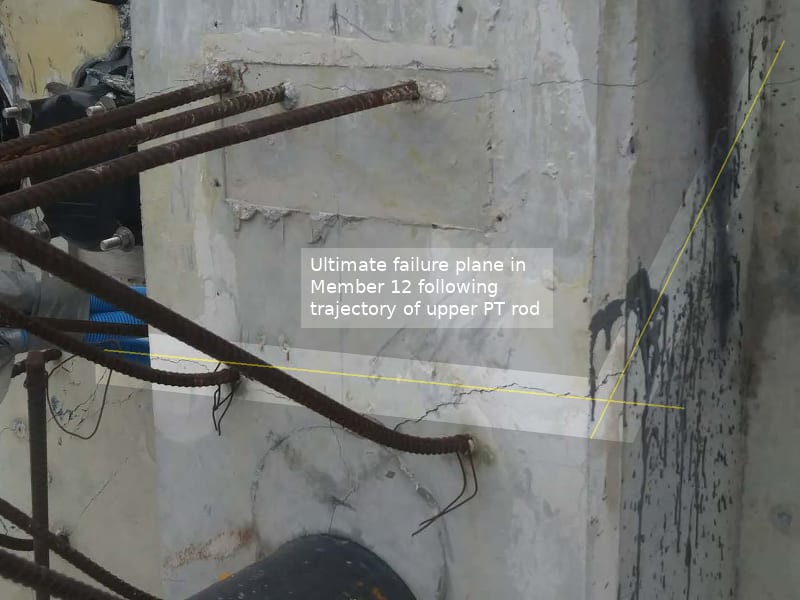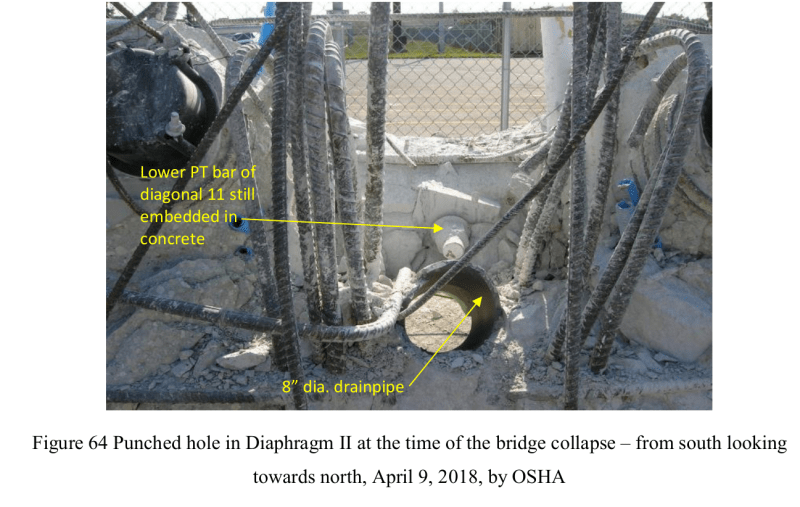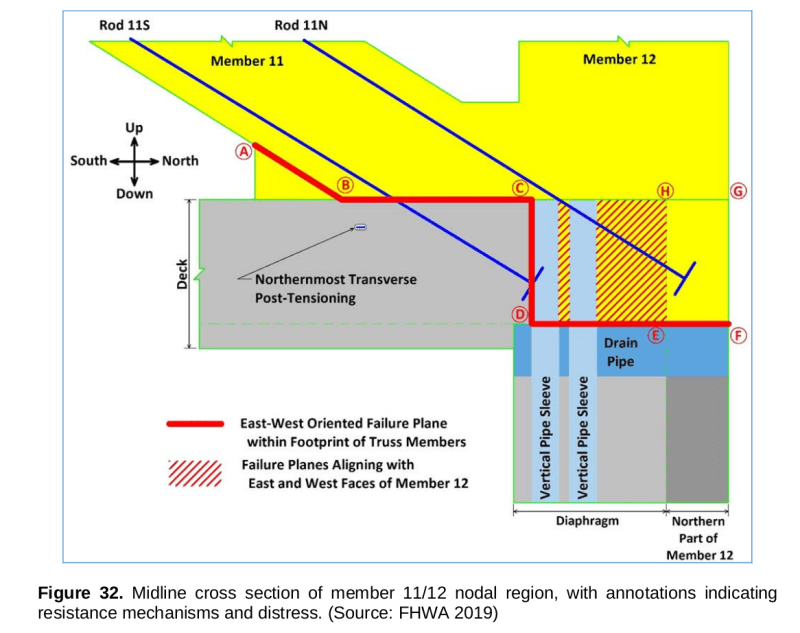Sym P. le (Mechanical) said:
I do not submit to the fallacy of a concrete blowout.
In reinforced concrete a blow-out is a loose term. Generally it means when a part of the reinforced concrete under a very stress suddenly fails the local concrete is crushed into small pieces and disintegrated after the collapse.
OSHA is an officially appointed and professionally qualified investigator in the FIU bridge collapse and the word
blow-out has been used in the report text five times and in the description figures also five times. NTSB used the word
blowout also four times in the text and one time in the figure description. Thus the word
blow-out or blowout would be the opinion of an expert witness in court and one I would concur based on having worked all my life with reinforced conceret. Thus I am sure it isn't a fallacy.
Comparing your figure posted on 1 Jul 20 17:57 with OSHA Fig 64 below (or any of Fig 58 to 70) your ultimate failure plane is nowhere near to what had happened on the bridge.
The bottom of 12 failed because the weakest plane, where the stress is the highest when the cross ection is the smallest, is at the 8" PVC drain and not somehwere above it where Member 12 still has a full cross section. The OSHA Fig 58 to 70 inclusively show no concrete above the 8" drain after the collapse.
The elastic mudular ratio between concrete and PVC is about 15:1 so the 8" PVC pipe could take hardy any laod. If both deflect by the same amount the PVC takes only 1/16 of the load when both have the same area. However the overall 8.6" OD PVC drain caused a 41% reduction in the 21" thickness of Member 12. As the drain pipe situated at the middle so the reduced section is split into two 6.2" thick pieces on either side of the PVC drain. Do you still think the 21" thick concrete is easier to break than two 6.2" sections when under the same load?
Lastly I like to re-post NTSB's Fig 32 below as this is the official failure plane concluded by NTSB and it matches all the post collapse photos. Any attempt to re-write the history or the offical verdict should be supported with similar rigorous analysis and investigation. Merely a personal opinion on something else not backed by proof is not a contribution to our understanding of what has really happened.


![[glasses] [glasses] [glasses]](/data/assets/smilies/glasses.gif)

